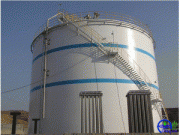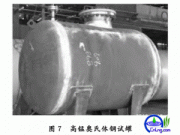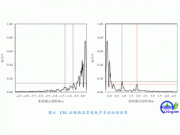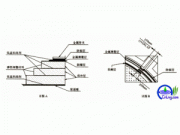免职声明:本网站为公益性网站,部分信息来自网络,如果涉及贵网站的知识产权,请及时反馈,我们承诺第一时间删除!
This website is a public welfare website, part of the information from the Internet, if it involves the intellectual property rights of your website, please timely feedback, we promise to delete the first time.
电话Tel: 19550540085: QQ号: 929496072 or 邮箱Email: Lng@vip.qq.com
摘要:A primary function of the Center for Liquefied Natural Gas (CLNG) is to serve as a clearinghouse of information about LNG. This section provides access to research papers on natural gas, liquefied natural gas and U.S. energy needs.CLNG did not com..
|
A primary function of the Center for Liquefied Natural Gas (CLNG) is to serve as a clearinghouse of information about LNG. This section provides access to research papers on natural gas, liquefied natural gas and U.S. energy needs. CLNG did not commission these research papers. We provide them to you unedited and in their entirety. However, on occasion, we find it necessary to comment on a paper because of inaccuracies in the research methods or other factors we believe resulted in erroneous results. Facing the Hard Truths about Energy, July 2007In the last quarter-century, world energy demand has increased by nearly 60 percent. Although the world is replete with energy sources, risks and challenges such as geopolitical restrictions on energy development, trade and security may hinder access to these resources needed to meet the growing global demand. Based on its studies encompassing a broad and long-term view of global energy projections, the National Petroleum Council proposes five strategies to assist markets in meeting future energy challenges and finds that coal, oil and natural gas will remain indispensable to meeting total projected energy demand growth over the next 25 years. Introduction to LNG, January 2007The first segment of the Center for Energy Economics’ Guide to LNG in North America provides an overview of liquefied natural gas – its properties, trade and the industry’s effective safety precautions. Sandia Report, December 2004The underlying theme of the December 2004 Sandia report is to develop guidance on safety and security steps that industry and government could take based on a risk-based approach to assess and quantify potential accidents and intentional threats. Such an approach takes into account both the potential consequences of an event and prevention and mitigation steps. Among the report’s key conclusions: “Risks from accidental LNG spills, such as from collisions and groundings, are small and manageable with current safety policies and practices. Risks from intentional events, such as terrorist acts, can be significantly reduced with appropriate security, planning, prevention and mitigation.” Ending the Energy Stalemate A Bipartisan Strategy to Meet America’s Energy Challenges, December 2004This report presents key findings from an intensive, three-year effort to develop consensus recommendations for future U.S. energy policy. Bringing together a diverse and bi-partisan group of leaders from business, government, academia, and the non-profit community, the National Commission on Energy Policy has sought to establish a constructive center in the often polarized debate about energy and to advance a coherent strategy for meeting the energy challenges of the 21st century that has the economic, environmental, and political integrity to overcome the current stalemate in national energy policy. The Role of LNG in North American Natural Gas Supply and Demand, September 2004In the third segment of the Center for Energy Economics’ Guide to LNG in North America, this report explains how LNG imports will help meet increased demand for natural gas in the United States. Interstate Natural Gas Association of America Foundation’s Update Assessment of Pipeline and Storage Infrastructure for the North American Gas Market, July 2004The report is an update of studies performed for the Foundation in 1999 and 2001 with respect to natural gas pipeline and storage infrastructure requirements in the context of the changes in market fundamentals that have taken place since those years. It projects that about $61 billion will have to be spent in infrastructure to accommodate North American demand growth that could reach 30 trillion cubic feet 2020. It projects the negative economic consequences that will affect natural gas customers by 2020 if there is a two-year delay in getting needed infrastructure in place. Consequence Assessment Methods for Incidents Involving Release from Liquefied Natural Gas Carriers, May 2004Liquefied natural gas (LNG) has been transported by sea since 1959 in specially designed LNG ships. These vessels have a remarkable safety record and provide an essential link in the movement of LNG from production locations to consumer locations. To assist in maintaining this exemplary safety record, the Federal Energy Regulatory Commission (FERC) sponsored this study with the goal of identifying appropriate analysis methods for estimating various potential hazards for LNG vessel cargo release during transit and at berth. Read the CLNG Technical Committee’s comments filed with the Federal Energy Regulatory Commission on this study. LNG Safety and Security, October 2003In the second segment of the Guide to LNG in North America, the Center for Energy Economics explains how technological advancements, research and stringent policies have ensured an outstanding safety record in the LNG industry for over 40 years. CLNG’s Summary of the National Petroleum Council’s (NPC) LNG Report, September 2003With the outlook for production from the lower-48 states and non-Arctic Canada flat-to-declining, new sources of supply will be required to meet the projected growth in natural gas demand. These new sources will also diversify the natural gas supply beyond traditional indigenous sources and provide access to the rapidly developing global LNG market. Balancing Natural Gas Policy – Fueling the Demands of a Growing Economy, 2003This multi-volume report responds to a request from the Secretary of Energy for the National Petroleum Council’s advice on the potential implications of new supplies, new technologies, new perceptions of risk, and other evolving market conditions that may affect the potential for natural gas demand, supplies, and delivery through 2025. The report provides insights on energy-market dynamics, including price volatility and future fuel choice, and an outlook on the longer-term sustainability of natural gas supplies. It also provides the Council’s advice on actions that can be taken by industry and government to increase the productivity and efficiency of North American natural gas markets and to ensure adequate and reliable supplies of energy for consumers. The report analyzes natural gas demand, supply, and transmission in the United States, Canada, and Mexico. The demand analysis provides an understanding of the economic and environmental determinants of natural gas consumption to estimate how the various sectors respond to different gas price regimes. The supply analysis develops a basin-by-basin supply picture, and examines potential new sources of supply such as liquefied natural gas and Arctic gas. The transmission portion of the report provides an extensive review of existing and planned infrastructure in North America emphasizing, among other things, the need to maintain the current infrastructure and to ensure its reliability. |

















